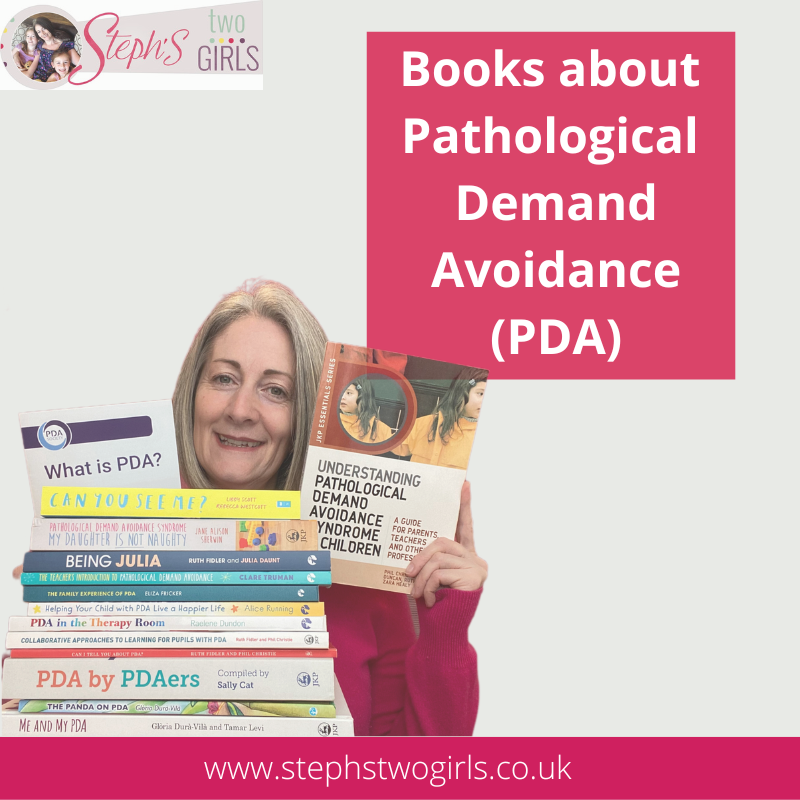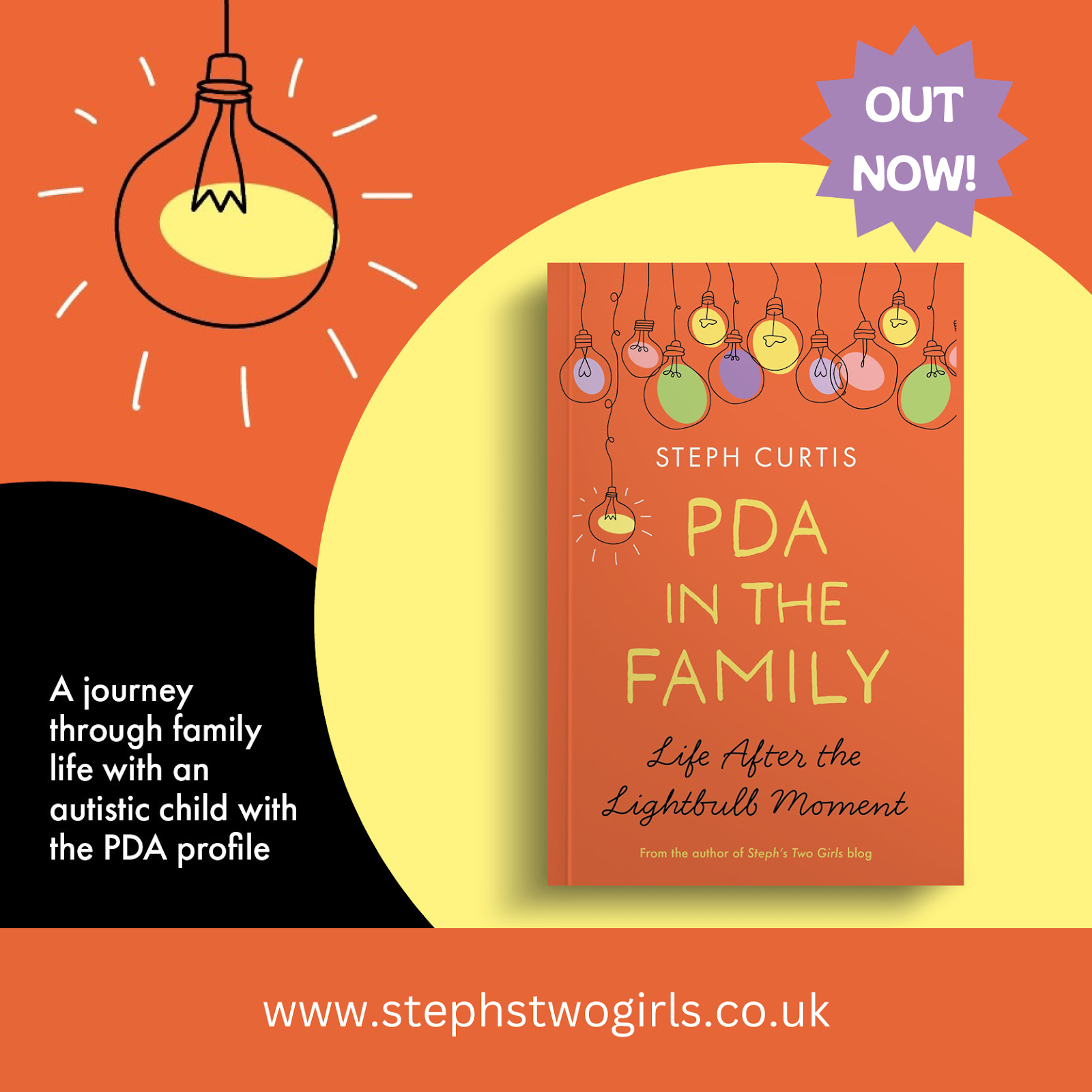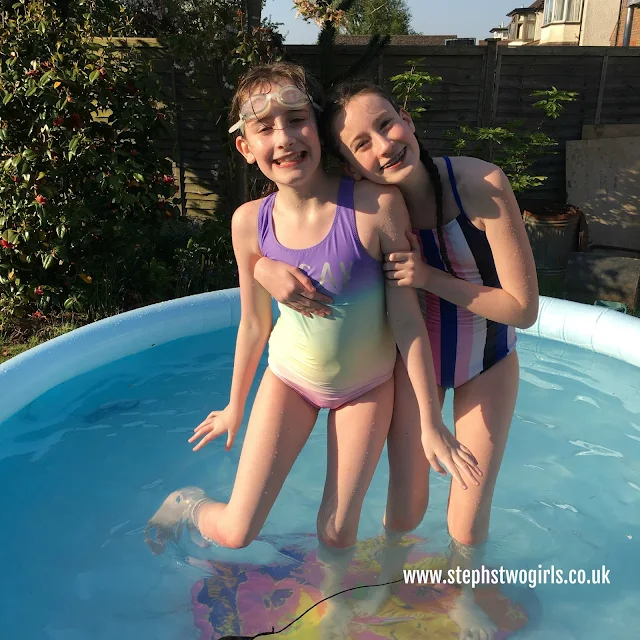My blog was started as an online diary to try and help others understand our youngest daughter, who was diagnosed with autism at the age of two and a half. It was always a blog about both girls; although I knew very little about autism when we first heard the diagnosis, I always knew it would affect the whole family and sibling issues is an area which I still have much to write about (watch this space!).
Over the past couple of years I've written as much as I can specifically about PDA. My most read posts are the ones explaining what Pathological Demand Avoidance is, what PDA strategies are helpful and how PDA is different from ODD (Oppositional Defiant Disorder). I've shared many stories from other families living with PDA in my series 'Our PDA Story'. I regularly link back to the PDA Society, who are a team of volunteers who all have children with PDA, and who helped us so much in the early days when Sasha was younger.
Today's Action Day started off very positively with a feature on BBC Radio 5 Live. At lunchtime ITV will hopefully cover the peaceful march in Westminster which aims to raise awareness and highlight the need for more recognition, particularly among healthcare professionals. Anna Kennedy OBE will be speaking there, along with Sally Russell OBE, two very inspirational mums who understand the need for more action on PDA. I wanted to be there myself, but I won't bore you with the long story about why it wasn't possible (I'll save that for my Facebook page post later...). The PDA Society have produced a Call To Action for all authorities to produce more guidance on PDA.
As it is Mental Health Awareness Week, it is also important to look at how this ties in with PDA. 'Being Misunderstood' is a document showing the results of a survey of nearly 1500 PDAers, their families and professionals which was undertaken at the recent PDA Society Conference. This infographic gives an indication of some of the areas of difficulty; school plays a large part in all of this not surprisingly.
There's a great new page on strategies which has been created for today over on the PDA Resource website; a group effort of real life practical suggestion of how to help.
There are ups and downs to living with PDA but plenty of positives too, as I wrote about recently in my post Autism and PDA positives. It may not be my most read post yet, but it's definitely one of my favourites!
What keeps me going through it all is, of course, these two girls. Sasha is now 10, nearly 11, and our eldest will turn 13 this week. Siblings of children with PDA have to learn how to adapt and not be dominant; our eldest girl is the most caring, understanding big sister who uses the PDA strategies without complaint (most of the time). Both girls are amazing in their own very different ways, and I hope that at some point in the future this blog could become a place for them to share their points of view too.
If you'd like to hear more about our story, you can hear me chatting with an autism specialist in a podcast over on YouTube:
To find out more about our experiences, please check out our 'About Us' page. If you are looking or more information on Pathological Demand Avoidance, why not try some of these, my most popular posts?
What is PDA (Pathological Demand Avoidance)?
Ten things you need to know about Pathological Demand Avoidance
Does my child have Pathological Demand Avoidance?
The difference between PDA and ODD
Strategies for PDA (Pathological Demand Avoidance)
Pathological Demand Avoidance: Strategies for Schools
Challenging Behaviour and PDA
Is Pathological Demand Avoidance real?
To follow me on other social media channels, you can find me at the following links or click the icons below!
Facebook: www.facebook.com/stephstwogirls
Twitter: twitter.com/stephstwogirls
YouTube: www.youtube.com/c/stephcurtis
Instagram: www.instagram.com/stephstwogirls/





















No comments:
Post a Comment
Comments are always very much appreciated and can really help the conversation go further...